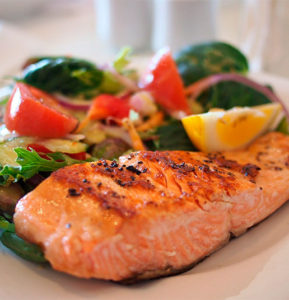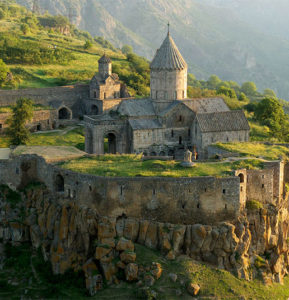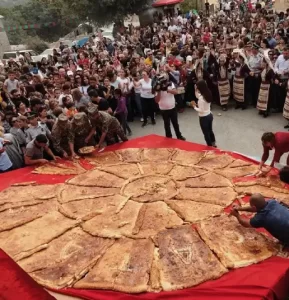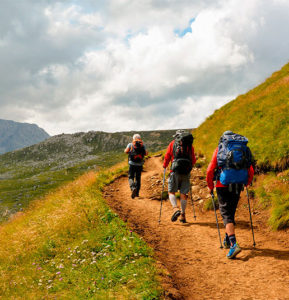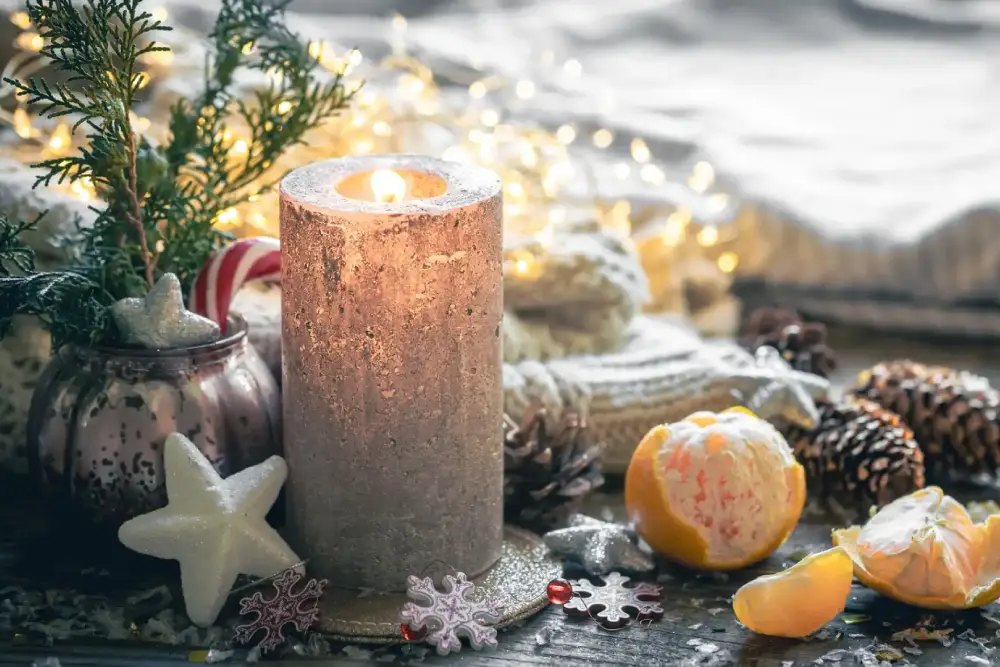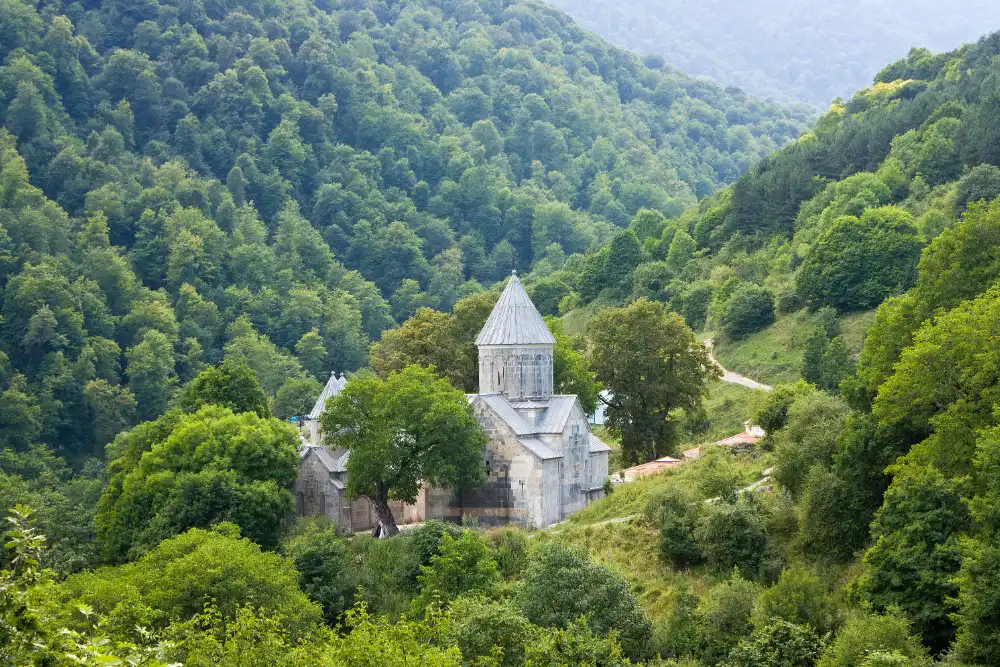When tourists come to Armenia, they’re often curious about various aspects of Armenian life, including cuisine, wine, the natural beauty of the country, and the entertainment options available. Below, we provide answers to some of the most commonly asked questions.
What to eat in Armenia?
It might come as a surprise, but Armenian cuisine is influenced by the seasons. During cold weather, hearty and warming dishes like khash, vanakhash (qalagyosh), soups with sorrel, harissa, tanapur, and kyalla (mostly famous in Gyumri) are preferred. In the summer, lighter fare such as grilled vegetables, okroshka, garni yarach, summer salad, and jengyal bread from Artsakh is more popular. However, there are certain dishes that you can enjoy year-round, such as barbecue, ghapama, arishta, and khashil.
Barbecue, in particular, is a beloved Armenian dish, and you can find various types of barbecue options. For example:
- Tonri khorovu, made from lamb or mutton, often served with farro pilaf, can be sampled at Armenian restaurants.
- Grilled Trout fish from Lake Sevan is a delicacy not to be missed.
- In the cities of Dilijan and Ijevan, you’ll find incredibly tasty pork barbecue.
Cheese and lavash (traditional Armenian flatbread) are essential components of Armenian breakfast tables. Popular cheese varieties include lori, chanakh, eghegnadzori, and mothala.
One of the most renowned Armenian desserts is the traditional Gatha from Garni village.
Does Armenia have good wine?
Armenian wines are renowned for their notably high alcohol content. Primarily crafted from technical grape varieties, Armenian wine boasts a uniqueness derived from millennia of cultivating endemic grapes. Beyond grapes, Armenian winemakers also produce wines from various fruits, with pomegranate wine being the most famous among them. These wines mature in oak wood barrels after undergoing a specialized processing stage.
Wine enthusiasts have the opportunity to immerse themselves in Armenia’s wine culture by attending the annual wine festival. This event showcases up to 400-500 different wine varieties, with festivities taking place in various cities, including Yerevan, Areni, Dilijan, and others. In Yerevan, the renowned Saryan Street is often referred to as the “street of wine cafes.”
For those curious about the winemaking process, wineries open their doors on special open days, offering visitors a chance to explore their production facilities. Furthermore, for those interested in the rich history of winemaking, Armenia houses a dedicated Wine History Museum.
Is Armenia a beautiful place?
Armenia finds itself in a mountainous temperate zone, characterized by four distinct seasons and abundant sunshine. Winters bring cold temperatures and snow, while spring and autumn offer mild and rainy conditions. The summer season is warm and sunny.
For those who prefer cooler climates, the mountainous regions of Aragats, Aparan, Spitak, and others provide a welcome escape with consistently lower air temperatures.
On the contrary, southern Armenia is a haven for warm weather enthusiasts, maintaining relatively higher temperatures even in winter. Cities like Kapan, Meghri, and Agarak, nestled among the mountains, enjoy the benefits of a warm climate, resulting in exceptionally sweet orchard fruits.
Armenia boasts numerous mountains, such as Aragats, Khustup, Azhdahak, Dimats, Ara, and Kaputjugh, offering fantastic opportunities for mountain hiking. Whether you prefer a lower or higher altitude, different types of mountain terrain are accessible, accommodating various temperature preferences.
For those enchanted by forested landscapes, the eastern regions beckon. Tavush and Lori regions stand out with their dense forest cover. Cities like Dilijan, Ijevan, and Stepanavan are nestled within these woodlands, resembling places straight out of a fairy tale.
Yerevan, Armenia’s largest city, earns its monikers of “the Pink City” and “the Sunny City” due to its preponderance of sunny days and buildings constructed from pink tuff. The city boasts a diverse and plentiful array of cafes.
Gyumri, Armenia’s second-largest city, presents a contrast to the capital city with its colder and longer winters. Gyumri is celebrated for its artisans and rich cultural heritage, characterized by narrow streets, 19th-century black tuff buildings, cobblestone streets, and the presence of horse-drawn carriages.
What are some Armenian rituals?
Like many ancient civilizations, Armenia observes numerous national and ritualistic holidays. Here, we highlight a few particularly special ones: Tsakhkazard, Vardavar, Blessing of the Grapes, and The Presentation of Jesus. Let’s delve briefly into the essence of these holidays.
The Presentation of Jesus, celebrated on February 13 by the Armenian Apostolic Church, Armenian meaning of this holiday is “meeting the Lord.” Indeed, it extends an invitation to everyone to come and meet Lord. It symbolized the end of winter and the arrival of spring in pre-Christian period.
During this ritual, a fire is lit, often using wheat ears, and people encircle the fire until it turns to ashes. They then leap over the fire, believing it bestows blessings. Ritual meals are traditionally crafted from cereals, symbolizing abundance and prosperity.
Vardavar, one of the most joyful summer holidays, commemorates the radiance of Jesus Christ, celebrated by the church. In pre-Christian times, it was dedicated to Astghik, the goddess of beauty and love. In accordance with tradition, Astghik spreads love throughout Armenia by sprinkling rose water.
Modern-day Vardavar sees Armenians joyfully splashing water on each other, spreading love across the country. The celebration takes place all across Armenia, leaving no corner untouched.
Palm Sunday
Palm Sunday is dedicated to the miraculous journey of Christ to Jerusalem. In pre-Christian times, it was devoted to Nari, the goddess of water and rain, who bestowed rain upon the earth to rescue it from drought.
This springtime celebration sees people venturing into the streets, weaving willow wreaths to place on their heads. The church blesses and distributes willow or olive branches to the people, and the streets come alive with vibrant spring flowers and vividly painted stalks of wheat.
What to do in Armenia?
Are you inclined towards a leisurely holiday or an active adventure? Armenia caters to both preferences.
For those seeking active pursuits, there are numerous opportunities to engage in exhilarating activities such as rafting, bungee jumping, ropeway, zip-lining, hiking, skiing, and more. The country’s diverse landscapes offer the perfect backdrop for these adventures.
Armenia may lack access to the sea, but it compensates with the stunning Lake Sevan. Due to its high altitude, the lake remains refreshingly cool throughout the year, making it an ideal spot for swimming during the summer months.
History and culture enthusiasts will find plenty to explore in Armenia. Centuries-old churches, monasteries, and fortresses dot the landscape, transforming the country into an open-air museum.
Residents of Yerevan cherish their evening strolls, particularly along the central streets like Saryan, Abovyan, Cascade, and Northern Avenue. It’s a great option for those who prefer a more relaxed form of leisure. These leisurely walks offer an opportunity to savor the city’s ambiance, replete with bars, pubs, clubs, and charming cafes.
For winter sports enthusiasts, Tsaghkadzor is a well-known destination. This resort town draws thousands of skiers each year. However, the evenings in Tsaghkadzor tend to be quiet, with dimly lit streets.
In conclusion, Armenia offers an array of experiences, but the true essence can only be grasped by visiting the country in person, immersing yourself in its culture, landscapes, and history.

